Back Pain
Back pain is one of the most common medical issues affecting adults. According to statistics, 8 out of 10 people will experience significant back pain at some point in their lives. Back pain can originate from problems with any of the structures in the spine—including bones, muscles, ligaments, nerves, or discs.
The symptoms can range from sharp and stabbing to dull and aching. While acute back pain often resolves on its own with conservative treatment, chronic or persistent back pain may require more intensive therapies. Understanding the anatomy of the back and the underlying cause of pain guides treatment options.
Anatomy of the Back
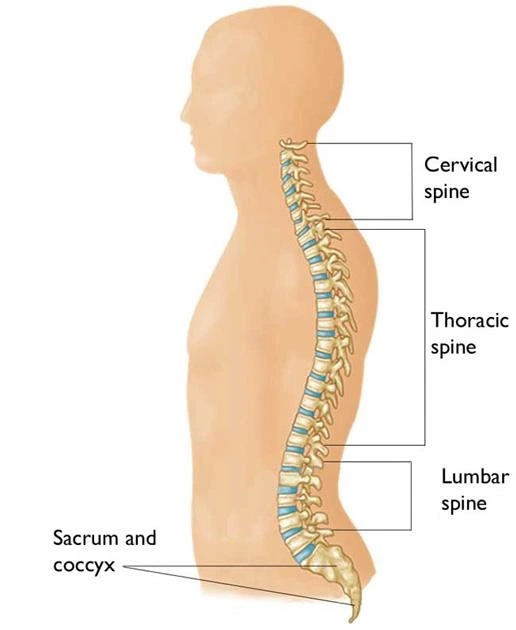
The spine forms the central support structure of the back, comprising 33 vertebrae interspaced by discs and enveloped by protective muscles and ligaments.
Vertebral Column The five regions of vertebrae are:
- Cervical (7 bones) – supports the skull
- Thoracic (12 bones) – attaches to ribcage
- Lumbar (5 bones) – bears weight of torso
- Sacral (5 fused bones)- pelvic attachment site
- Coccygeal (4 fused bones) – vestigial bone at the base
These bones provide height, surround and protect the spinal cord pathway, and enable trunk rotation.
Intervertebral Discs Between vertebrae lie fibrocartilaginous discs comprising a gel-filled nucleus pulposus surrounded by rigid annulus fibrosus rings. These cushion bones, anchor ligaments, and nerves, and permit slight vertebral movement. Deterioration of discs commonly occurs with age or injury.
Spinal Cord and Nerves: The spinal cord runs through the hollow vertebral foramen, giving rise to nerves branching between vertebrae transmitting sensory and motor signals. Impingement of spinal nerves results in neurological symptoms like weakness, numbness, and radiating pain in limbs.
Lower Back: Lumbar Spine The five large, weight-bearing lumbar vertebrae reside below the rib cage. Alongside cushioning discs, layers of tendons, ligaments, and muscles surround and move the lumbar vertebrae, providing trunk flexibility. Key muscle groups include erector spinae, multifidus, piriformis, transverse abdominus, and quadratus lumborum.
Biomechanics Behind Back
Pain The intricate structures of the spine withstand significant pressures daily and rely on coordinated muscle strength, flexibility, and motion to prevent tissue strain. Imbalances readily provoke pain signals.
- Poor Posture: Slouching stresses facet joints, compresses discs by shifting weight forward, strains posterior ligaments, and contracts muscles correcting postural deviations. This mechanical strain sensitizes pain receptors.
- Muscle Imbalances: Tight psoas, hamstring or hip flexor muscles pull excessively on vertebrae which tissue weakness allows to overly move. This alters alignment. Weak core muscles also fail to stabilize joints leading to increased spinal segment motion that impinges nerves.
- Unexpected Forces: Sudden or repetitive lifting, bending, twisting, or impact sports motions overextend the range of joint movement despite core/stabilizer efforts. These jeopardize ligament, disc, facet joint, and muscle tissue integrity to varying degrees from micro to microtears.
- Degenerated Discs: Deteriorated, dried-out discs lose the ability to compress and rebound as vertebral shock absorbers leading to transferred mechanical pressures to adjacent areas that inflame tissue. Nerve contact also increases as space narrows.
- Abnormal Curvatures: Excess lumbar lordosis, thoracic kyphosis, or pronounced scoliosis shift body weight abnormally leading to asymmetric joint impact during movement and gait. Muscles like QL and piriformis spasm trying to compensate.
- Arthritis/Bone Spurs: Inflamed joints and bony overgrowths obstruct the range of motion eliciting localized pain signals. Spinal nerves may also be directly irritated at exit points.
Types of Back Pain
Acute Back Pain
Develops suddenly and lasts for several weeks. It usually results from trauma, muscle strains, or injuries to ligaments, tendons, or discs.
Common Causes:
- Heavy lifting or improper lifting techniques
- Abrupt jarring motions
- Poor posture
- Muscle pulls and strains
- Bulging or herniated discs
- Osteoarthritis
- Symptoms include localized pain, muscle spasms, pain with movement, and loss of flexibility.
Chronic Back Pain
Persists for over 3 months. Indicates an underlying medical condition or anatomical problem.
Common causes:
- Degenerative disc disease
- Spinal stenosis
- Scoliosis
- Osteoporosis
- Fibromyalgia
- Associated symptoms are stiffness, decreased range of motion, radiating pain into the leg, and numbness/tingling.
Lower Back Pain
- Most prevalent type: estimated over 80% of cases involve the lumbar region. Includes pain between lumbar discs L1-L5 or sacral discs.
- Risk factors: obesity, smoking, strenuous physical labor
- Varieties include axial low back pain, radiculopathy, spinal stenosis
Upper Back Pain
- Less common than lower back pain.
- Associated with poor posture, obesity, muscle overuse, osteoarthritis, and rib inflammation.
- It can refer to pain in the neck, arms, and shoulders and cause headaches.
Radiating Pain
- Pain that travels down the arms or legs from the spine
- Results from compression or inflammation of spinal nerves
- Nerve root compression causes sciatica – pain starting in the lower back and radiating down the leg along the sciatic nerve pathway.
Back Pain and Pregnancy
Many women develop back pain while pregnant due to physical and hormonal changes. Up to 80% of expectant mothers are affected to some degree, commonly feeling aches in the lower back or pelvic region as extra weight strains the spine. Discomfort often begins around the 20th week as the uterus expands and weight gain shifts one’s center of gravity, forcing posture adjustments. This extra pressure pinches nerves and stresses joints already loosened by hormones like relaxin.
Lower back curvature increases as well, contributing to added tension. While pain typically increases as pregnancy advances, it resolves within months after delivery. Managing symptoms during pregnancy involves gentle stretching, physical therapy, ergonomic modifications, maternity belts, heat therapy, massage, and acetaminophen if approved by a doctor. Learning proper movements and maintaining core strength can provide significant relief without medication for many.
Consult a physician if discomfort becomes severe, radiates down the legs, or persists months postpartum, as this may require additional interventions. With some vigilance about body mechanics and care for overtaxed areas during this challenging but temporary time, soon-to-be mothers can minimize disruptions from back pain.
Symptoms of Back Pain
Back pain can manifest in a variety of symptoms that can disrupt daily functioning and quality of life.
Pain around Back
The most common symptom is pain, which presents in several forms – burning, stabbing, sharp, or dull aches. Lower back pain tends to feel like a dull ache, while pain from a muscle spasm may be a sharp and stabbing sensation. Discomfort may be localized in one area or radiate to other regions. Many describe the pain as persistent and intense. Even routine activities may intensify symptoms.
Back Muscle Spasms
Muscle spasms often accompany back injuries or spinal conditions. Spasms produce painful tightening or contraction of muscles. Sudden movements can trigger severe muscle spasms resulting in debilitating pain. Areas may be tender to touch and the range of motion decreased.
Stiffness and Flexibility Loss
Reduced flexibility and stiffness – especially first thing in the morning – correlates with inflamed damaged tissues. Simple actions like bending to tie shoes or looking over the shoulder become difficult due to diminished movement. Ongoing stiffness indicates chronic inflammation that warrants medical attention.
Numbness/Tingling
Numbness or tingling sensations in the extremities can also occur if spinal nerves become impinged or damaged. Sciatica causing radiating leg pain may be accompanied by numbness in legs, feet, or toes. Tingling also results from nerve inflammation. These neurological symptoms indicate more advanced spinal issues.
Causes of Back Pain
Causes of chronic low back pain can vary and may involve multiple factors that interact with each other. These factors can include mechanical or structural issues in the spine, inflammatory conditions, and other medical conditions. It is also possible for back pain to occur without a specific identifiable cause.
Mechanical or structural problems
- Mechanical or structural problems in the spine, discs, muscles, ligaments, or tendons can result in back pain. This can happen when the spine’s ligaments, which connect the different bones, are injured due to twisting or improper lifting.
- Back pain can also occur due to muscle or tendon injuries.
- Aging can cause degenerative disc disease, which leads to the breakdown of discs between the vertebrae. This condition is associated with other degenerative changes in the spine, such as arthritis or spinal stenosis.
- Back pain can also be caused by herniated or ruptured discs, where a disc compresses and irritates nearby nerves. This can happen in the lumbar or cervical spine.
- Spondylolisthesis, a condition where a vertebra slips out of place or gradually moves out of alignment, can also contribute to back pain.
- Additionally, spinal stenosis, which refers to the narrowing of the spinal canal and the resulting pressure on the spinal cord and nerves, can cause back pain.
- Other factors that can lead to back pain include fractured vertebrae, scoliosis, and other congenital changes to the spine. Myofascial pain, characterized by tightness and pain in the muscles supporting the spine, can occur due to muscle damage or nerve input from the spine.
Overall, back pain can stem from various mechanical, structural, and medical factors, and its causes may overlap or coexist. By understanding these causes, it becomes possible to effectively address and treat chronic low back pain.
Inflammatory conditions
- Inflammatory conditions, such as ankylosing spondylitis and other forms of inflammatory arthritis in the spine, can cause back pain. However, there are also uncommon causes of back pain that should be considered. If you have persistent back pain that does not go away, is important to consult a doctor.
Other Medical Conditions
There are various other medical conditions that individuals may experience:
- These include osteoporosis, a condition that can result in painful vertebrae fractures.
- Fibromyalgia is another condition characterized by widespread muscle pain and fatigue. Kidney stones or infections can also occur.
- Endometriosis, which refers to the accumulation of uterine tissue outside the uterus, is another medical condition.
- Infections affecting the bones of the spine or the discs between them can lead to back pain.
- Additionally, tumors may develop on the spine or other areas of the back in rare cases. Lastly, pregnancy is also a medical condition that individuals may face.
Risk factors
Back discomfort can affect everyone, even kids and teenagers. The following elements may make having back pain more likely:
- Old Age: As people age, back discomfort becomes increasingly prevalent, peaking at age 30 or 40.
- Inadequate exercise: Back discomfort may be caused by weak, underused muscles in the abdomen and back.
- Excessive weight: The back is under additional strain when one is overweight.
- Disease: Back discomfort may be exacerbated by certain cancers and arthritis varieties.
- Improper lifting: Back pain might result from using the back instead of the legs.
- Psychological circumstances: Back discomfort seems to be more common among those who are depressed and anxious. Tension in the muscles brought on by stress can aggravate back discomfort.
- Smoking: In smokers, back pain is more common. This could happen because coughing from smoking can result in herniated disks. Smoking also increases the chance of osteoporosis and decreases blood flow to the spine.
Diagnosis
Diagnosing the cause of back pain involves a detailed medical history, physical examination, imaging tests, and neurological assessments. Doctors utilize this information to identify the structures involved and guide appropriate treatment.
Medical History
Questions focus on the nature, location, and intensity of pain, injury mechanisms, lifestyle factors, and medical conditions. Identifying precise symptoms helps locate problematical spinal structures. Details on alleviating or aggravating actions also provide insight.
Physical Exam
A neurological and orthopedic exam tests the range of motion, posture, gait, alignment, flexibility, and the spine’s reflexes, sensations, and muscle functioning. Abnormal responses help elucidate affected nerves, muscles, or bones. Palpation of the back determines areas of tenderness.
Imaging Tests
If warranted, imaging like x-rays, CT scans, or MRIs visually reveal spinal anatomy – highlighting discs, vertebrae, facets, ligaments, and spinal cord – and any observable underlying pathologies. These help diagnose fractures, arthritis, infections, cancer, herniations, and more.
Differential Diagnosis
Performing an accurate differential diagnosis is crucial when assessing back pain to rule out severe underlying conditions and distinguish symptoms of potentially progressive diseases from harmless sources.
- Spinal Stenosis: Abnormally narrowed spinal canals or nerve root canals cause neuropathy, cramping, numbness, or weakness in the legs along with back pain. Stenosis-impinging nerves require possible decompression surgery if conservative care fails.
- Osteoporosis: Weakened bone density from this progressive disease risks compression fractures and vertebral collapse. Distressed vertebrae prod back discomfort that intensifies with activity. Anti-osteoporosis medication helps stabilize bone health before irreversible spine damage.
- Compression Fractures: Fractures compressing anterior segments of vertebral bodies arise from osteoporosis, trauma, or cancer. Pain localizes in the back without spreading to the legs. Healing times vary depending on severity. Braces temporarily stabilize fractures at risk of worsening.
- Spinal Tumors: Unexplained persistent back pain, especially at night or while resting, warrants investigating tumors. Other red flags include unexplained weight loss and a history of cancer. Tumor location and spinal cord impingement determine the optimal course.
- Discitis: Inflammation between discs from bacterial infection elicits swelling and mild neurological deficits. Immunocompromised patients require prompt antibiotic treatment to curtail progressive destruction and abscess risks.
- Cauda Equina Syndrome: Impingement on bundles of lumbar and sacral nerve roots causes bowel/bladder dysfunction and saddle anesthesia along with sciatic radiating pain. Surgical decompression within 48 hours gives the best outcomes for this rare disorder.
Carefully analyzing subtle historical clues and advanced imaging ensures proper diagnosis guides appropriate intervention based on the specific structural weaknesses or disease processes present.
When to see a doctor
In most cases, back pain gets better over time with self-care and at-home treatment, usually in a matter of weeks. If you have back pain that:
- Continues for more than a few weeks.
- Is terrible and does not get better when you relax.
- extends down one or both legs, particularly if the soreness is subchondral.
- Results in tingling, numbness, or weakness in one or both legs.
- Is combined with an inexplicable loss of weight.
Rarely, back pain may indicate a major health issue. If you get back pain that:
- Causes new problems with the bladder or bowel.
- It comes with a fever.
- follows a trauma such as a fall or back damage.
Treatment of Back Pain
Various treatment alternatives exist for managing back pain, ranging from at-home remedies and lifestyle modifications to medications, physical therapy interventions, and if conservative measures fail, surgery.
Self-care
- Heat/ice packs to alleviate muscle spasms and inflammation
- OTC pain relievers (acetaminophen, NSAIDs)
- Posture correction and ergonomic equipment
- Rest and activity modification
- Stretching and gentle exercises to improve flexibility
Medications
If self-care strategies prove inadequate, physicians may prescribe:
- Muscle relaxants: Alleviate spasms and tension
- Oral steroids: Decrease spinal nerve inflammation
- Antidepressants: Help chronic pain neurotransmitters
- Anti-seizure drugs: Block nerve pain signals
- Pain relievers (opioids, tramadol): Temporarily reduce discomfort
Physical Therapy for Back Pain
Modalities for Back Pain
- Heat therapy and ice are two effective approaches to pain relief in the lower. Ice therapy helps inflammation, while heat therapyes tight muscles. used together these therapies can provide relief.
- Ultrasound therapy specific sound wavelengths to the skin, resulting in a heating effect. This promotes muscle relaxation and tissue healing. Due to these benefits, ultrasound is commonly used for low back pain.
- Transcutaneous electrical nerve stimulation (TENS) is a safe form of therapy that utilizes a low-voltage electrical current. works by overriding the signals sent to the brain thereby relieving lower pain and enhancing functionality. TENS offers long-term relief and is effective in managing pain.
Flexibility and Mobility Exercises
Before incorporating these stretches or exercises into your routine, it is advisable to consult with a healthcare professional.
Stretching exercises can help improve flexibility in the hips, legs, and glutes, potentially reducing lower back pain. Here are some exercises that target these areas:
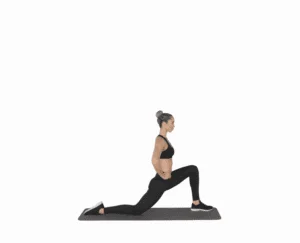
Hip Flexors:
- Start by kneeling on the ground with one knee and bring the arm on the same side straight up and slightly back.
- This will extend your hips and middle back.
- Hold this position for 30 seconds and then release.
- Repeat this stretch three times on each side.
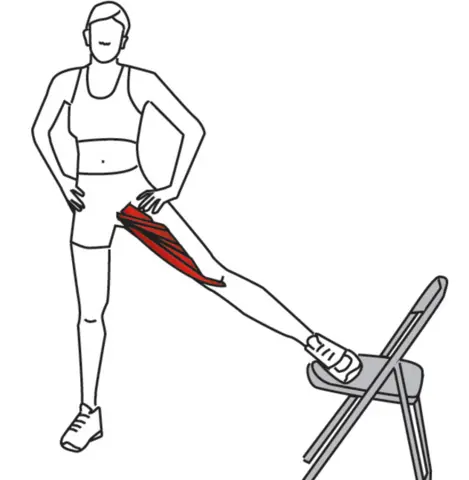
Hip Adductor:
- Stand and place the inside of your ankle on a table, bed, or tall chair.
- Raise the opposite arm straight up next to your ear as if reaching for the ceiling.
- Lean into the leg being stretched and hold for 20 to 30 seconds before releasing.
- Repeat this stretch three times on each side.
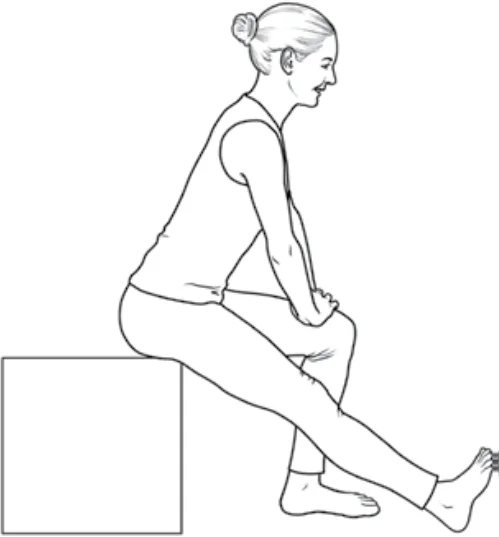
Hamstrings:
- Facing a table, bed, or tall chair, take a stand.
- Straighten your leg by placing the back of your heel on the ground.
- You may stretch your hamstrings by bending forward at the hips.
- After 30 seconds of holding, release.
- On each side, perform this stretch three times.

Glutes:
- Facing a table, bed, or tall chair, take a stand.
- Form a 90-degree angle with your leg and place the outside of your heel and knee on the ground.
- Maintain a straight back while bending forward at the hips.
- After 30 seconds of holding, release.
- On each side, perform this stretch three times.
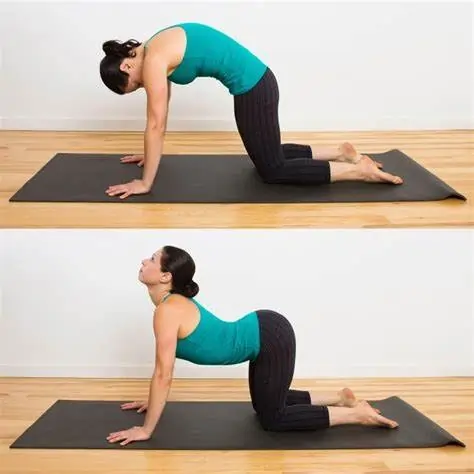
Cat and Cow:
- Begin on all fours with your hips over your knees, shoulders over your hands, and head in a neutral position.
- Inhale as you look up towards the ceiling and arch your spine towards the floor.
- Exhale as you arch your spine towards the ceiling and tuck your chin to your chest.
- Repeat this motion 15 to 20 times.
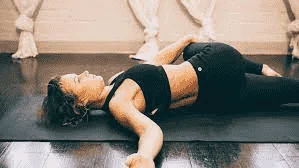
Side-to-Side:
- Start by lying on your back with your knees bent and feet close to your hips.
- Gently twist your knees to one side until your hips begin to lift off the table or mat while keeping your upper body in position.
- Bring your knees back the other way and repeat on the other side.
- Do this exercise 25 to 30 times.
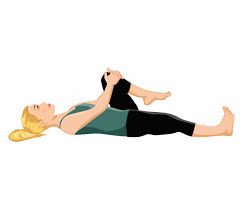
Knee to Chest:
- While lying on your back with your knees bent, bring one knee towards your chest as far as you comfortably can.
- Hold in place for 20 to 30 seconds, then let go.
- Repeat this stretch three times on each side after switching sides.

Child’s Pose:
- Kneel on the base and sit back on your heels.
- Bend forward with your arms extended in front of you, resting your forehead on the floor.
- Hold this position for 30 seconds or until you feel relief from the stretch.
Thread the Needle
- Begin in a tabletop position with your hands and knees on the ground, ensuring your back remains flat.
- Extend your right arm towards the sky.
- Lower your right arm almost immediately, threading it through the space between your left shoulder and body.
- Extend your right arm as far as possible to the left side. Hold for around 30 seconds.
- Repeat the sequence on the other side.
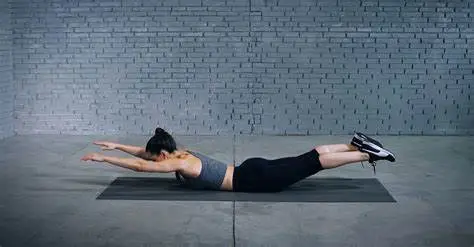
Superman move
- Lie face down with your arms outstretched in front of you.
- Lift both your arms and legs simultaneously, shifting your weight towards your lower spine.
- Hold the raised position for 30 seconds before releasing. You can shorten the duration if it feels uncomfortable.
Remember to perform these exercises slowly and cautiously. If you experience any pain, it is advisable to rest and refrain from further activity.
These exercises can help improve flexibility in the hips, legs, and glutes, potentially reducing instances of low back pain. Regular practice may lead to positive results.
Strengthening Exercises
Exercises for Strengthening and Alleviating Pain. Enhancing core and back strength is highly important in managing low back pain. The exercises below are designed to help strengthen these areas and provide relief for back pain. We will begin with the simpler exercises and progress to more challenging ones.
Note: Most of these exercises require engaging your abdominal muscles. It is essential to maintain the correct form, which involves drawing in the muscles instead of pushing them out. Your lower stomach should flatten slightly. Overflexing can occur if you push your abs out.
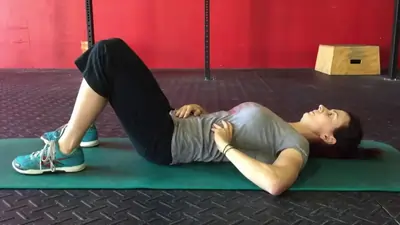
Supine Core Strengthening
- Lie on your back on a mat or the floor, with your knees bent and your feet comfortably apart from your hips.
- While in this position, engage your abdominal muscles and press your lower back down against the mat or floor.
- Repeat this movement 15 to 20 times.
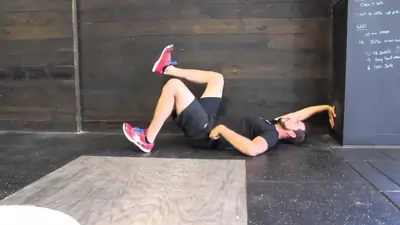
Supine Core Strengthening with Leg Draw
- Lie on your back with your knees flexed and your feet lying on the base. Engage your abdominal muscles.
- Maintain this engagement while lifting one knee toward your chest without using your hands.
- Keep your abs engaged until you return your foot to the starting position.
- Repeat this sequence 15 to 20 times on each leg.
Press Ups
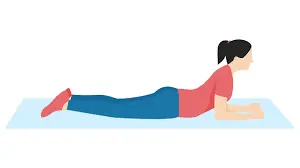
- Lie flat on your stomach, placing your hands just above your shoulders with your elbows at your sides. Your legs should be fully extended, and your hips should be level with the floor or mat.
- Pull your shoulder blades back and lift your chest off the ground, all while keeping your legs and hips in contact with the floor.
- Maintain this lifted position for 5 seconds, ensuring your neck stays aligned with your upper spine.
- Slowly lower your chest back to the ground.
- Repeat this exercise 15 to 20 times.
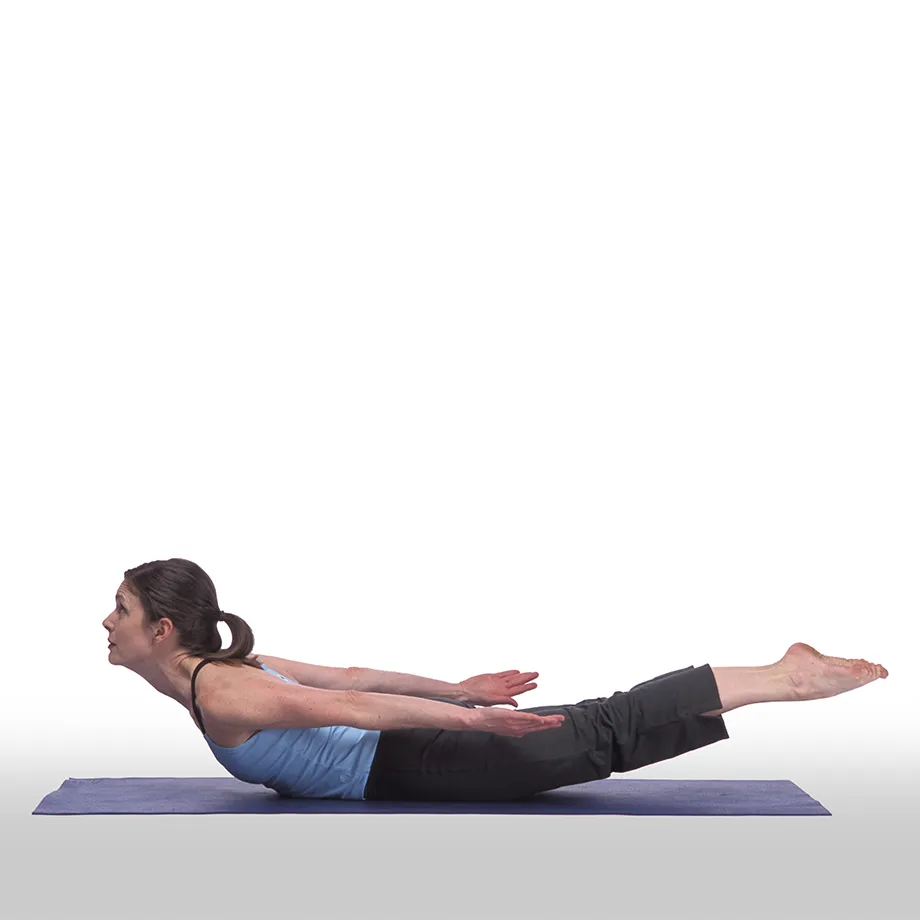
Prone Cobras
- Lie flat on your stomach with your legs extended and your arms flush against your sides, with your hands pressed against your legs.
- Without using your hands for assistance, lift your chest off the ground while keeping your neck aligned and extended. Pull your shoulder blades in and contract your glutes throughout the movement.
- Hold this position for 3 to 5 seconds before gradually lowering your upper body back to the mat or floor.
- Repeat this sequence 10 to 15 times.
Bridge
- Begin by lying on a mat or the floor, with your knees bent and your feet flat apart from your hips.
- While keeping your arms on the ground, raise your hips off the ground to create a bridge formation. Your body should create a straight line from your chest to your knees.
- Maintain this position for 5 to 10 seconds, engaging your shoulder blades, neck, glutes, and abs throughout.
- Gradually lower your hips back to the ground.
- Repeat this exercise 15 to 20 times.
Note: To increase the difficulty of this exercise, cross your arms over your chest to eliminate their support.
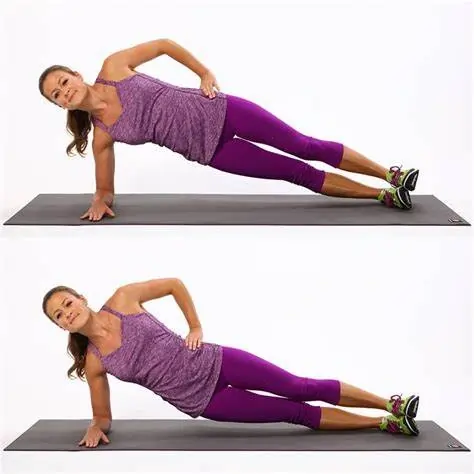
Side Bridge
- Start by lying on your side with one elbow positioned underneath you.
- Raise yourself onto your elbow and forearm.
- Elevate your legs off the ground, supporting yourself only with your forearm and the side of one foot.
- Hold this position for 15 seconds before gently lowering yourself back down. Gradually increase the duration of each hold as you feel more comfortable.
- Repeat this sequence 10 to 15 times on each side.
Bird Dog
- Assume a hands-and-knees position, with your shoulders over your hands and your hips over your knees.
- Simultaneously extend one arm and the opposite leg straight outwards (left arm with right leg, or vice versa).
- Hold this position for 10 to 15 seconds before slowly returning your limbs to their starting position.
- Alternate between sides, repeating this exercise 15 to 20 times.
Prone Bridge
- Begin by lying on your stomach, with your elbows positioned directly underneath you and your toes supporting your weight.
- Raise yourself to rest on your toes and elbows, engaging your core and keeping your body in a straight line. Ensure your hips and chest remain parallel to the floor.
- Hold this position for 15 seconds before gently lowering yourself back down. Increase the duration of each hold as you progress, up to 90 seconds.
These exercises aim to strengthen your core and back muscles while alleviating pain. Incorporate them into your routine to experience their benefits.
Surgery
Procedures for treating back pain may encompass the following options:
- Injection of cortisone: If other treatments do not alleviate leg radiating pain, injecting cortisone and a numbing medication near the spinal cord and nerve roots may offer relief. While this technique reduces inflammation around the nerve roots, the pain relief typically lasts for a month or two.
- Radiofrequency ablation: By inserting a thin needle near the source of pain, radio waves are employed to impair the nearby nerves. This disruption of the nerves hampers the transmission of pain signals to the brain.
- Implantation of nerve stimulators: Under-the-skin devices can be implanted to deliver electrical impulses to specific nerves, effectively blocking pain signals.
- Surgery: For individuals experiencing progressive muscle weakness or back pain radiating down the leg, surgery can be beneficial. This procedure aims to create more space within the spine, addressing issues such as herniated disks or conditions causing the narrowing of the spinal openings.
Ergonomics for Back Pain Prevention
Proper ergonomic design principles strive to optimize equipment, workspace layout, and movement dynamics in an environment to promote efficient, safe, and comfortable functioning for inhabitants. Applying these concepts to minimize spinal strain and nerve impingement provides immense benefit for back pain.
Seating
Choosing ergonomic chairs with adjustable features allows custom alignments of the lower back. Key considerations include:
- Lumbar support for natural spine curvature
- Multiple height settings to enable feet flat on the floor with thighs parallel to the ground
- Front seat tilt to ease disc pressure
- Cushioning and width for equal weight distribution
Desks
The ideal work desk setup incorporates:
- Height compatibility with worker and chair allowing elbows at a 90-degree angle
- Sufficient surface space for necessary work materials
- Angled keyboard tray ensuring wrists remain straight
- External monitor positioned at eye level to avoid neck strain
Lifting/Bending
Equipment modifications prevent awkward postures including:
- Carts/trolleys for transporting heavy items
- Gripping tools like long-handled reachers reduce the need to bend down
- Anti-fatigue mats for tasks requiring standing
- Headsets for frequent phone use eliminate clenched shoulders
Incorporating physical micro-breaks, self-stretches, and postural resets throughout the day plus variation among sitting, standing, and walking are equally beneficial for ensuring muscles stay supple and movement patterns balanced.
Optimizing workspace ergonomics significantly minimizes the risk of developing debilitating back conditions due to small cumulative stresses that accrue over years into injury and pathology. The impact on comfort and function cannot be understated. An ergonomic assessment can reveal simple affordable adjustments with immense impact.
Managing/Preventing Back Pain
While the causes of back pain vary, several key self-care strategies help manage discomfort and prevent future flare-ups, including building core muscle strength, maintaining proper body mechanics, managing stress levels, and optimizing ergonomics.
Core Strengthening Exercises
Strong abdominal, back, gluteal, and oblique muscles provide essential stabilization and take pressure off the spine. As core fitness improves, everyday activities and repetitive motions cause less strain. A mix of isometric planks, bridges, Pilates, resistance training, and aerobic activity makes the most impact.
Weight Loss
If overweight, gradually shedding extra pounds relieves mechanical force on the spine. Even modest weight loss helps preserve functionality. For those with obesity, bariatric surgery may become advisable to prevent degeneration.
Good Posture/Ergonomics
Poor posture results in back-straining misalignment. Setting up workstations, car seats, and home furniture to align with natural spinal curves saves wear and tear. Devices prompting better posture cues help recondition habits.
Stress Management
Anxiety and mental stress amplify pain signaling. Relaxation techniques like yoga, massage, meditation, and CBT therapy all alleviate amplified neurological responses contributing to chronic back discomfort. Pacing activity helps prevent or reduce flare-ups as well.
Proper Lifting
Adhering to safe lifting procedures prevents muscle pulls and disc injuries. Fundamentals include squatting with a straight back, holding loads close to the body, changing direction with the feet, and limiting heavy twisting motions while bearing weight. Understanding proper mechanics empowers sustainable functioning.
Summary
Back pain is one of the most prevalent medical issues, destined to affect over 80% of adults at some point according to recent statistics. It constitutes one of the top reasons prompting doctor visits and time off work. Back pain arises due to strain on the intricately layered muscular, tendon, joint, disc, and bone anatomy making up the flexible spinal column extending from neck to pelvis.
The location, severity, duration, and character of pain widely vary based on the structures involved – from localized lower back muscle spasms to radiating nerve impingements in the cervical spine, to dull chronic thoracic arthritis aches. Injuries like herniated discs, poor posture misaligning joints, obesity taxing the spine, emotional stress ratcheting up muscle tension, pregnancy weight shifts on the pelvis, and degenerative processes behind aging, osteoporosis, and autoimmunity all contribute mechanically and biologically.
Effective personalized management relies on a thorough medical workup identifying the source factors responsible, whether impinged nerve, strained muscle, or irritated joint. Self-care strategies like ice, heat, OTC oral medications, and gentle stretching provide first-level relief while underlying issues heal or are corrected by conservative treatment methods. These include targeted physical therapy regimes improving flexibility, strength-building, and body mechanics; injections decreasing inflammation; chiropractic adjustment; massage techniques releasing protective contracted surrounding muscles; traction/inversion decompression; or as a last resort – surgery when warranted to shave bone, stabilize unstable segments, remove isolated disc fragments or release constricted nerves not responding to less invasive measures over an adequate trial period.
Preventatively, maintaining proper spinal alignment, core muscle tone, and ideal weight, correcting postural habits, and using proper lifting mechanics go a long way to averting recurring or worsening pain from straining vulnerable anatomy. Some back conditions do chronically persist, but most find sufficient solace through an integrated treatment approach addressing the biomechanical and physiological factors behind what signals the discomfort. While intensely frustrating and limiting when acute or severe, back pain thankfully responds well over the long run to conservative modalities aligning with and gently promoting the body’s natural healing abilities.
Frequently Asked Questions (FAQs)
What triggers sudden acute back pain?
Acute back pain often follows physical overexertion from sports, heavy lifting, sudden falls, or accidents leading to sprain/strain of muscle ligaments, or herniated discs.
When to see a doctor for back pain?
Seek medical care if pain persists over 2 weeks, causes neurological symptoms, disrupts sleep, or worsens despite self-care. Also, seek attention following major trauma or falls.
What are warning signs of serious back conditions?
Watch for symptoms like bladder/bowel incontinence, fever, unexplained weight loss, or loss of strength indicating spinal cord compression, infection, fractures, or tumors needing prompt diagnosis.
What provides lower back pain relief at home?
Applying ice packs, OTC pain medication, gentle stretches, yoga, massage, and frequent movement breaks helps alleviate discomfort or pain flare-ups.
How can you improve poor posture?
Poor posture strains tissues, making back pain worse over time. Using posture braces/taping, performing targeted exercises, adjusting work setup, and setting physique reminders train better habits long term.
Which specialists treat back pain?
Orthopedists, neurologists, physical medicine doctors, chiropractors, physical therapists, and pain management specialists play vital roles in care for back conditions depending on the source.
When is spine surgery warranted?
Patients who do not gain relief of symptoms through extensive conservative treatment over 6-12 months may become candidates for minimally invasive spine surgery, especially if clear anatomical problems are uncovered. Surgery aims to stabilize structures or decompress nerves. Appropriateness depends greatly on individual circumstances.
References
- Martel, J. (2023, March 30). Everything You Want to Know About Lower Back Pain. Healthline. https://www.healthline.com/health/low-back-pain-acute#stretches-and-exercises
- Back pain – Symptoms and causes – Mayo Clinic. (2023, February 18). Mayo Clinic. https://www.mayoclinic.org/diseases-conditions/back-pain/symptoms-causes/syc-20369906
- 17 Best Physical Therapy Exercises For Lower Back Pain Relief. (2022, August 15). Sporty Doctor. https://sportydoctor.com/exercises-for-lower-back-pain/
- Professional, C. C. M. (n.d.). Back Pain. Cleveland Clinic. https://my.clevelandclinic.org/health/diseases/22325-back-pain#symptoms-and-causes
- Curtis, L. (2022, November 21). Back Pain. Verywell Health. https://www.verywellhealth.com/back-pain-symptoms-causes-and-treatment-5525713#toc-causes-of-back-pain
- Physical Therapy for Back Pain: A Complete Guide. (2022, December 29). Miracle Rehab Clinic. https://www.miraclerehabclinic.com/blog/physical-therapy-for-back-pain
- Branch, N. S. C. A. O. (2023, December 27). Back Pain. National Institute of Arthritis and Musculoskeletal and Skin Diseases. https://www.niams.nih.gov/health-topics/back-pain
- A. M. T. J. (2022, December 8). Physiotherapy Modalities for Treating Low Back Pain – Joint & Spine. Joint & Spine. https://pruskijointandspine.com/physiotherapy-modalities-for-treating-low-back-pain/
- Lifestyle Medicine and Office Ergonomic Strategies for Managing Low Back Pain. (n.d.). Physiopedia. https://www.physio-pedia.com/Lifestyle_Medicine_and_Office_Ergonomic_Strategies_for_Managing_Low_Back_Pain

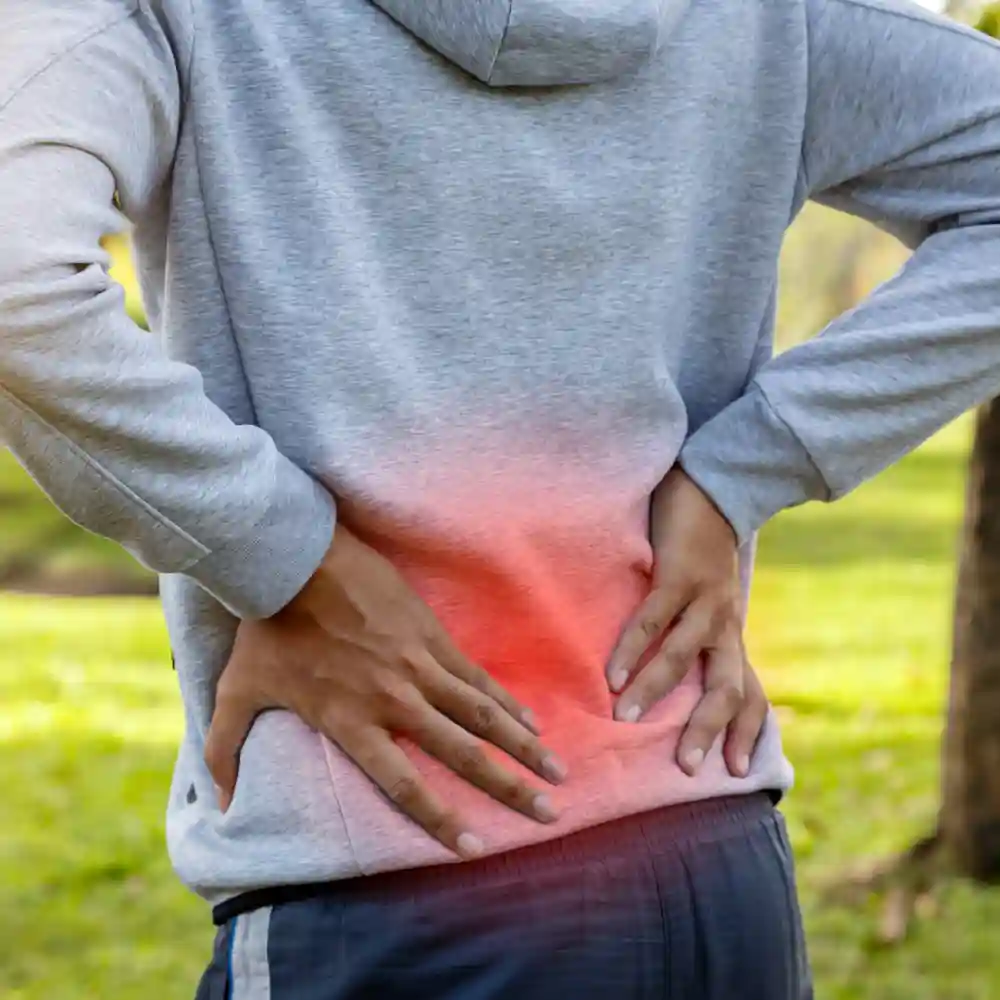
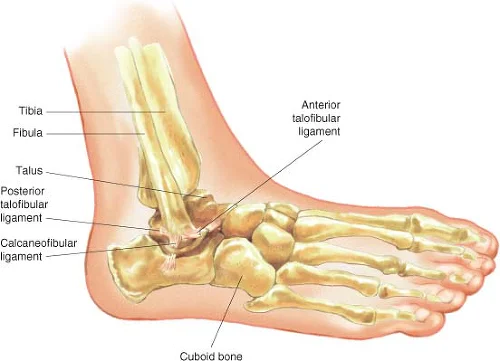
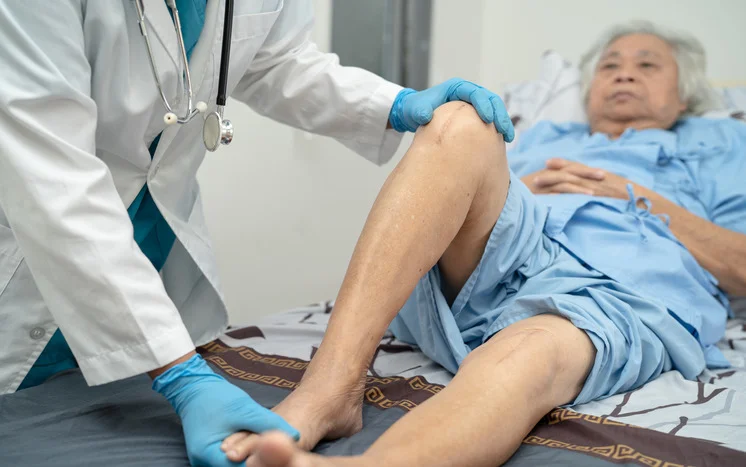
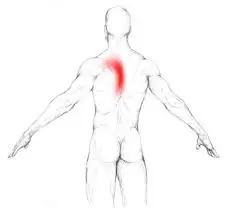
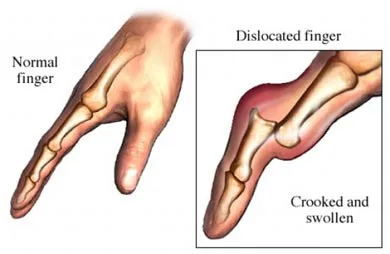
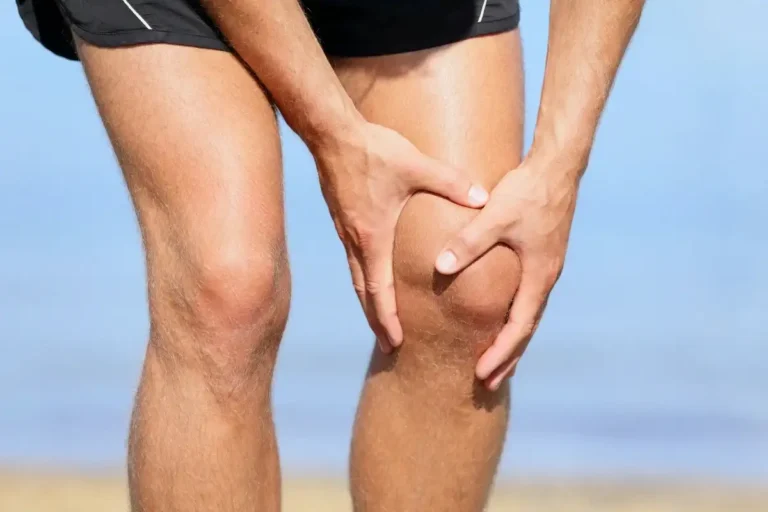
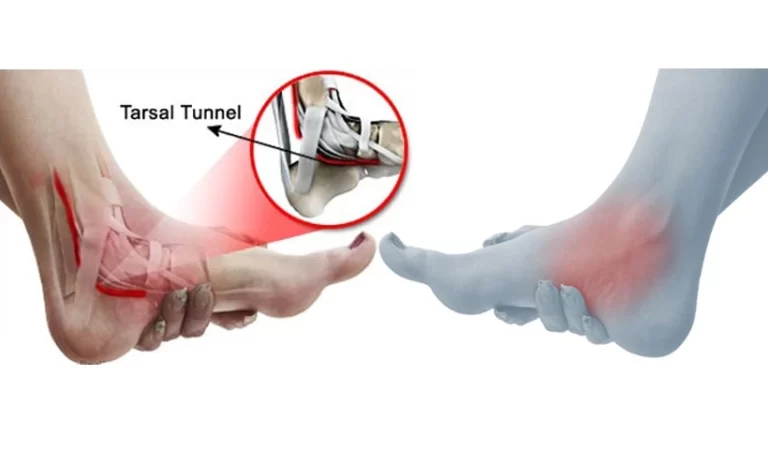
68 Comments